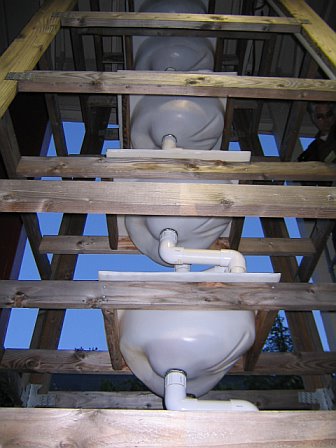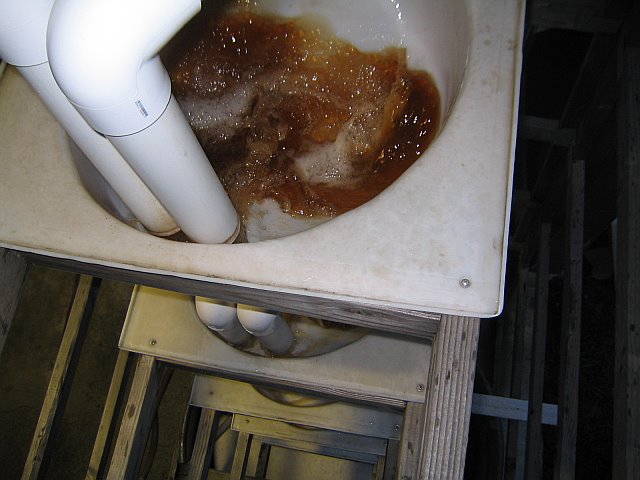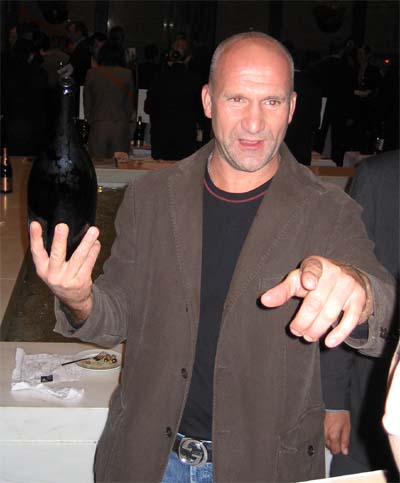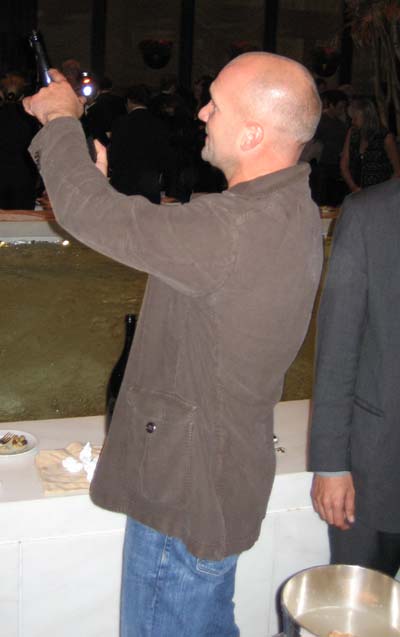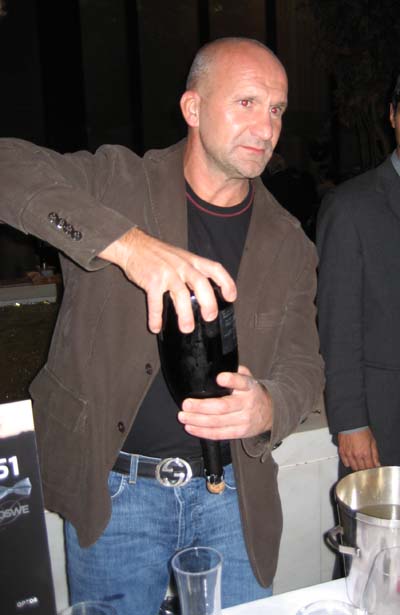Dr Vino's wine blog
wine talk that goes down easy
Moe Mamtazi: biodynamics at Maysara
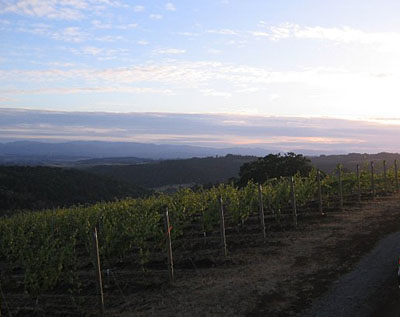
Moe Mamtazi emigrated to America from Iran in 1971. He’s made his career since then mostly outside the wine industry. But in 1997, Moe and his wife Flora bought 532 acres of hilly, disused farmland not far from where they live in McMinnville, Oregon. Since then, they have planted 113 acres of mostly pinot noir. They sell some fruit to other wineries as well as making their own wine under the label Maysara.
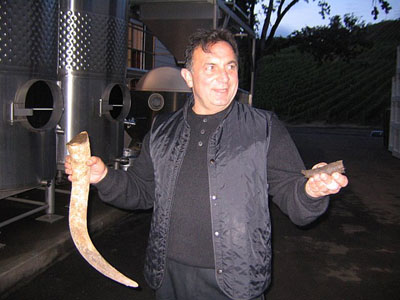
Moe was disenchanted with much of the produce he found in America when he arrived since he said looked good but lacked flavor. Later he learned about chemicals in American farming and wasn’t thrilled about that either.
One year Lalou Bize Leroy, something akin to the High Priestess of Biodynamics, came to the annual International Pinot Noir Celebration in Oregon. Moe told me that he tasted her Burgundies and thought they were great. He was intrigued why. He listened to her talk about her methods of biodynamic viticulture. Already an advocate of organic farming, pushed him over the edge to biodynamics. (read more on Moe’s transition in his words here.) Biodynamics prohibits chemicals and synthetics and blends in a dose of faith.
In the photo above, Moe holds a cow’s horn, one of several treatments that biodynamics requires. Moe was certified biodynamic in 2005.
Moe has build this multitiered system for “dynamizing” various applications. The liquid, in this case a nettle “tea” (that didn’t taste half bad!), is pumped into the top bowl where it rotates clockwise, then flows into the second bowl where it rotates counterclockwise, and continues down the multiple tiers to the final steeping tank at the bottom. Each bowl is made from the mold of the belly of a very pregnant woman.
The wines are quite good expressions of pinot noir. I’ll add some tasting notes and more about biodynamics in a posting next week where I round up some of Oregon’s biodynamic producers…Stay tuned.
 tags: wine | biodynamics
tags: wine | biodynamics
Ales Kristancic uncorks Movia
These photos show Ales Kristancic uncorking his sparkling wine at a recent tasting in NYC. Ales runs his family’s estate, Movia, in the part of Friuli that crosses into Slovenia. The wines are all made through biodynamics, the process of “organic plus” winemaking that blends in a shot of moonlight. If you’re looking for unusually refreshing, exciting, vibrant wines, keep an eye out for the wines of Movia–start scouring since they are hard to find though not outrageously expensive, about $25 – 35 for most of them (but the strong Vila Marija line is around $12; search).
Ales bottles his sparkling wine unfiltered. So in the third picture above he is coaxing the final sediment toward the cork. In the second photo he is pointing it out. Then he plunged it into the water bucket cork down, eased the cork out, and the sediment followed. Anybody want a taste? (photo 1) I did.
The sparkler, a 1999 from magnum, is amazingly fresh and clean. There is none of that bready, yeasty note that is common to champagne and not unpleasant. This was just so fresh, fruit and bubbles and totally dry.
The ribolla gialla is a sort of flagship wine from the estate. Made from 80 year old vines, the 2004 that I tasted was beautifully balanced between fruit, acidity and minerality. It is aged on the lees (more sediment!), which give is depth and roundness. Apparently its age-worthiness is legendary, lasting 50 years or more. But it is drinking great now.
But I liked his 04 sauvignon (blanc) a tad more. I have been paying attention to serious sauvignon blanc recently and this one definitely qualifies. A great mouthfeel, poised between acidity and creaminess, this wine has fantastic weight and intensity. The 04 pinot grigio was also very good and favored crushed stone notes over crushed flowers.
The 2004 Vila Marija merlot at $12 is an absolute steal. Bland be banned! This merlot has the great characteristics of the variety that are not hidden under layers of oak. How refreshing.
Try a wine from Movia this fall. But with only 13,000 cases made at the estate, the only trouble is finding a bottle.
Feeling natural in Paris wine bars
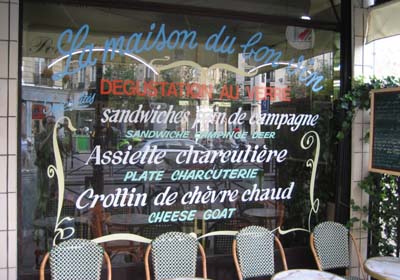
The Parisians are getting natural. And I’m not talking about life on the Paris plage, the beaches that the current mayor put in a few summers ago, where topless sunbathing is prohibited. I’m talking about wine bars that are au naturel.
I read about the trend in Alice Feiring’s NYT story. I had to check some of them out for myself.
First stop, Aux Tonneaux aux Halles. On a non-touristy pedestrian street off of Les Halles, the owner was there pouring wine behind the bar. He buys the dozen or so wines available by the glass directly from the producers. Many of the wines are made without the addition of sulfites, some are made biodynamically, and they all taste distinctive. Be sure to try the excellent goat cheese. And the Morgon vielles vignes 2003 from G. Descombes.
Near the Chatelet metro, is Bistro Les Halles. No, Tony Bourdain is not the chef. But you can have a quick lunch at this olde tyme bistro–though it pays to arrive early to beat the rush. I love the Frenglish translation on the window (pictured above). Wines by the glass are between two and five euros.
Heading to the Latin Quarter, La Cremerie, mentioned in the NYT story has changed hands as of September 1. Pierre Jancou who had presided over the huge slab counter in the tiny wine shop/bar for four years decided to move to Germany and import the wines that he had been pouring in the sixth arrondissement. But he would only sell the shop to a like-minded owner so at least this space won’t become a fashion boutique.
Le Comptoir du Relais in the sixth is bigger and swankier than La Cremerie–indeed, swankier than most of the natural wine bars. With a more extensive menu, this spot in the hotel Relais St. Germain looks great. Pity I only had time to walk by it on this trip. Next time, a meal…
I also posted previously about the natural wines at Fish, a restaurant that also has a bar friendly enough to rival Cheers. As well as the 100 bottles of wine on the wall at La Muse Vin.
Anyway, just a few scribbles. Feel free to post your notes about your favorite wine bars among the new naturalistas.
Aux Tonneaux des Halles: 28, rue Montorgueil 75001
Le Bistro des Halles: 15, rue des Halles 75001
La Cremerie: 9 rue des Quatre-Vents 75006
Le Comptoir du Relais: 5, Carrefour de l’Odeon 75006
Fish: 69, rue de Seine 75006
La Muse Vin: 101, rue de Charonne 75011
Blogcast: Gregory Smolik and the wines of COS, Sicily

I tasted with Gregory Smolik yesterday at the Domaine Select portfolio tasting in New York City. You may remember Greg from last year’s Real Wine World project. Greg is now the Midwest Regional Manager at Domaine Select.
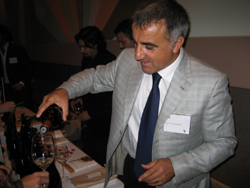 Although he’s no longer on his own, he still has his passion for the wines of Italy. I recorded us tasting the wines from the biodynamic producer COS from Sicily. COS owner Giusto Occhipinti (pictured right) was there but he does not speak English. As with the philosophy of biodynamics, the wines are made in an extremely natural style complete with respect for the lunar cycle. These wines from indigenous grape varieties are also fermented in terra cotta amphoras.
Although he’s no longer on his own, he still has his passion for the wines of Italy. I recorded us tasting the wines from the biodynamic producer COS from Sicily. COS owner Giusto Occhipinti (pictured right) was there but he does not speak English. As with the philosophy of biodynamics, the wines are made in an extremely natural style complete with respect for the lunar cycle. These wines from indigenous grape varieties are also fermented in terra cotta amphoras.
 We taste three wines:
We taste three wines:
1. Rami 2005, a white wine made from insolia and grecanico grapes (find this wine)
2. Pithos 2005, a light red made with nero d’avola and frappato. This was my favroite wine of the three. (find this wine)
3. Cerasuolo di Vitorra, a red aged in old oak barrels (find this wine)
Listen to Greg from the floor of the tasting talking about food pairings, using wood in winemaking, and descriptors such as “the inside of a walnut shell.” Find out which wine Greg says “you and I could drink three bottles each of this and we wouldn’t get a headache!”
Listen here (12 minute mp3 file)
Thanks for the audio help, Tim!
 tags: wine | biodynamic| Sicily
tags: wine | biodynamic| Sicily
Point of controversy: yeasts!
Jamie Goode, a British wine writer, argues in Wines & Vines that “the next battleground in the wine world will be the controversial use of genetically modified yeasts.”
I disagree. American wine consumers won’t care about genetically modified yeasts in the next five years or more.
 I wish they did. It’s hard enough to get wine consumers to care about a lot of winery practices such as watering back, reverse osmosis, micro-oxygenation or wood chips. But indigenous yeasts versus commercial yeasts? Sadly, it’s a non-starter.
I wish they did. It’s hard enough to get wine consumers to care about a lot of winery practices such as watering back, reverse osmosis, micro-oxygenation or wood chips. But indigenous yeasts versus commercial yeasts? Sadly, it’s a non-starter.
GM yeasts could spark popular interest but it’s doubtful. Americans eat GM corn and GM soybeans while Europeans generally reject them. Sure, there’s a growing number of organic choices in supermarkets now but a huge backlash against GM has not hit these shores. In part, that’s because GM is confusing.
One confusing aspect is the National Organic Program and how it applies to wine. I’ll elaborate in a future post. For now, suffice it to say that the protocol allow a wine to state “made with organically grown grapes” even if that’s only 70 percent true. And it makes no mention of using GM yeasts. As Goode points out, one such yeast strain, the ML01 is now commercially and legally available in the US.
The most likely way that American wine consumers would care about GM yeasts is if foreign consumers care first. If wine consumers in the UK or Australia or New Zealand were successful in getting some wording about GM yeasts on labels, and somehow those labels made it to the US, American consumers would start asking questions. But that’s a big if.
Goode may be right in calling for a ban on GM yeasts. But I don’t see the political will in America to achieve it.
 tags: wine | yeast | jamie goode | genetic modification
tags: wine | yeast | jamie goode | genetic modification
First person: Rick Trumbull
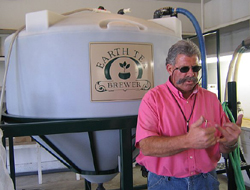 Rick Trumbull is an engaging character. He used to sell chemicals to farmers. Then he had a conversion to sustainability and organics. Now he makes compost for vineyards in the Walla Walla Valley such as Seven Hills vineyard.
Rick Trumbull is an engaging character. He used to sell chemicals to farmers. Then he had a conversion to sustainability and organics. Now he makes compost for vineyards in the Walla Walla Valley such as Seven Hills vineyard.
I visited his compost facility in Walla Walla recently. I recorded a few minutes of Rick talking about making his compost. Get the poop and listen to the audio!
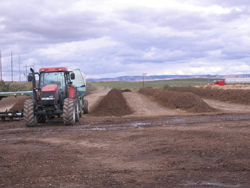
I also put up a photo of Rick in front of his “compost tea” brewer. Rick essentially steeps some compost in water, which then forms a nutritionally rich solution that can be applied to the vineyard. I never knew dirt could be so interesting.
Download audio 3mins 49secs, .wma format.
(Sorry about the wind–I’m new to audio. Hopefully podcaster Tim will be able to provide technical advice.)
 tags: wine | sustainable agriculture | compost | walla walla
tags: wine | sustainable agriculture | compost | walla walla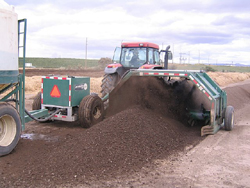
Evesham Wood, Blanc du Puits Sec
Evesham Wood, Blanc du Puits Sec, Eola Hills, 2005. $13 find this wine
While I was in Oregon recently, I tried this excellent organic pinot gris. Russ Raney adds depth to the wine by blending in 15 percent gewürztraminer, which makes it a terrific aperitif wine. It has the floral notes of pinot gris with a hint of the lusciousness of gewurtz all with minerality and refreshing acidity—I’d like to taste it blind against some Alsatian whites, or forget that, with some seafood! The only bad news is the limited availability of the wine. But based on this taste, I’d be very willing to cobble together an order of his very reasonably priced wines from Russ at the winery directly. Pinot gris, as only Evesham Wood! eveshamwood.com (503) 371-8478. Organic.
 tags: wine | wine reviews
tags: wine | wine reviews
What the Woot?!
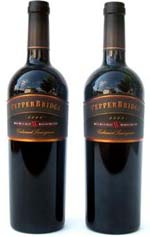
wine woot! Have you discovered the loot?
I just placed my first order since I was unable to resist two bottles of 01 Pepperbridge Cab from Walla Walla for $59.99 + $5 shipping. It’s usually $50 a bottle. (find this wine)
After punching in my order the delivery message was a little cryptic about when I would actually get the wine. I doubt that Woot handles the inventory but somehow shipping is always $5. I’ll keep you posted as to how long my order takes to reach me in NY. This is, of course, the beginning of the frugal wine buyer’s window for shipping wine by ground across the country. The summer heat is gone and the tundra has yet to freeze.
What is woot? Besides being yet another made up name since all existing domain names were taken, they offer a deal-a-day on general merchandise and a deal-a-week on wines. So every Sunday at midnight, they put up a new deal and the old deal is gone forever. The writing is hilarious. To wit:
Hey, taxpayer! Get ready to hand over some more of your hard-earned wages to those clowns in Washington! Only this time we’re talking about ye merrie winemakers at Pepper Bridge Winery in Washington state. And if you enjoy ultra-premium, critically-acclaimed wines like the Pepper Bridge 2001 Cabernet Sauvignon, this is one bill you’ll happily pay.
With a sales pitch like that it’s not hard to believe that the winery has sold 1200 bottles through Friday. I just stumbled on this news item where one of the Pepperbridge owners implies they are selling it as a loss leader, saying “Just given that it is a one week deal and nationwide exposure on a popular site to our wine, its been worth it for us.”
As of midnight tomorrow, though, the deal is over. And then the next one starts. Woot!
 tags: wine | woot | online wine shopping
tags: wine | woot | online wine shopping
